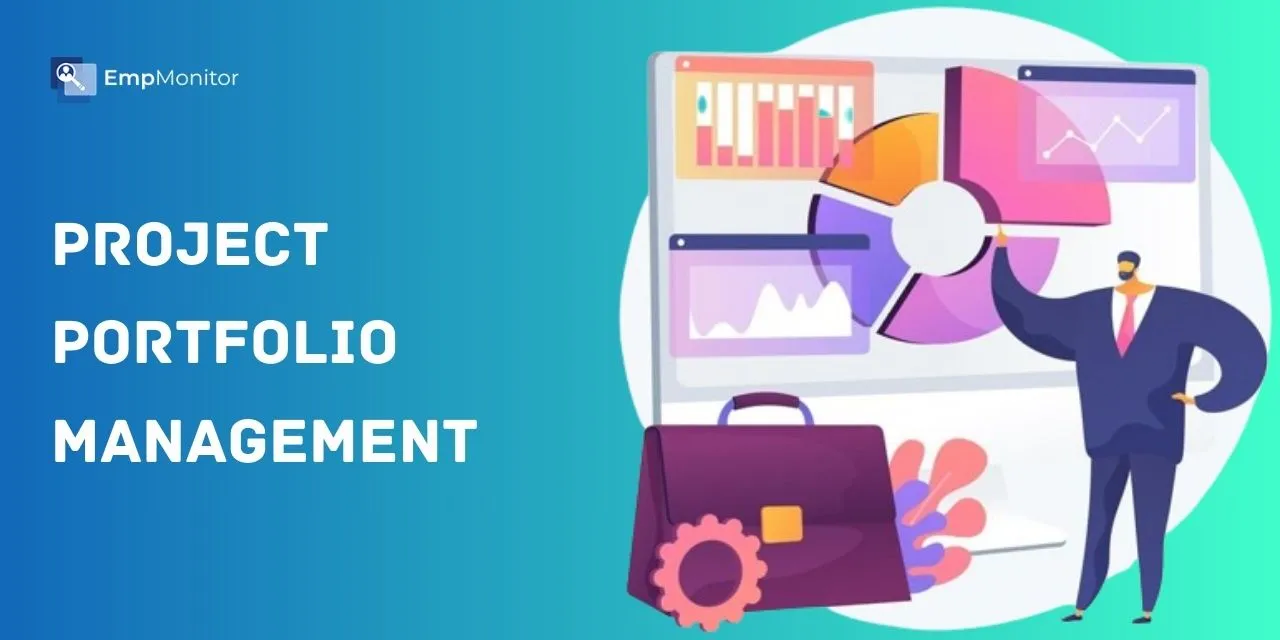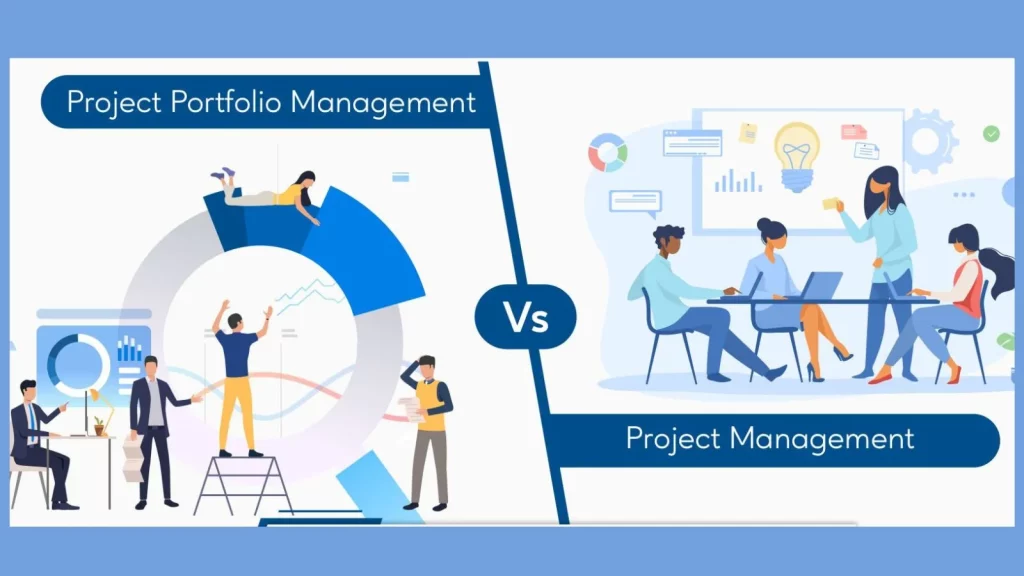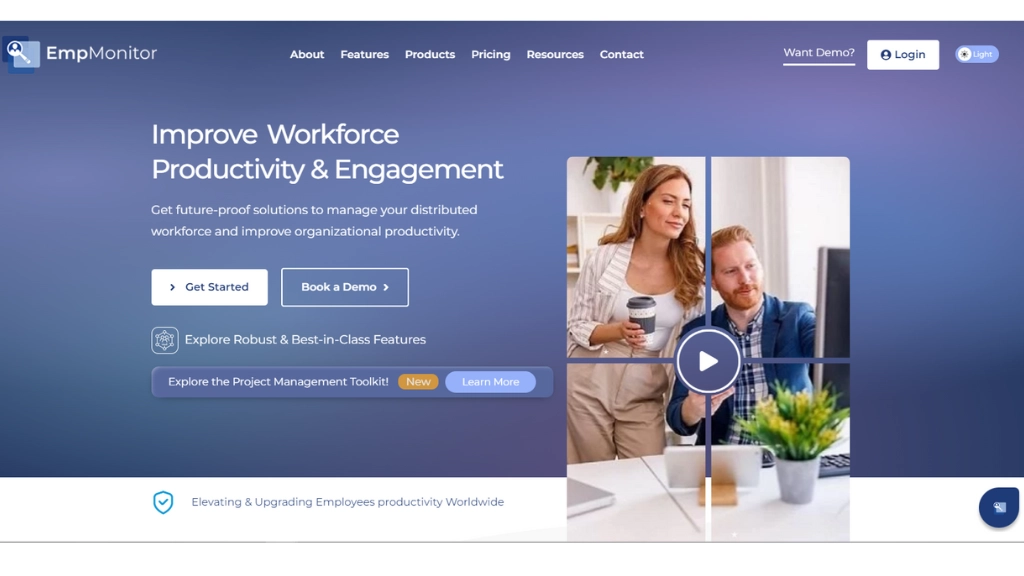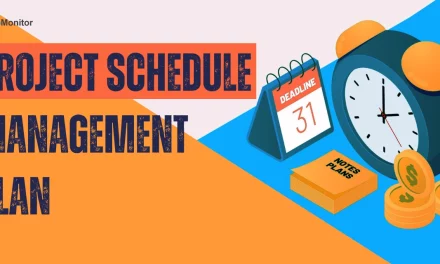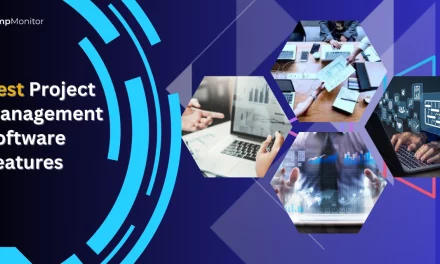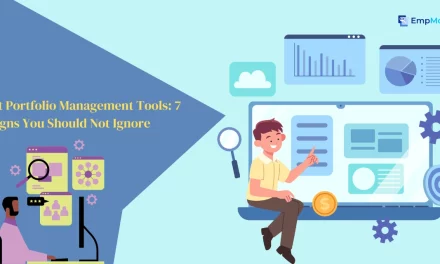Project Portfolio Management (PPM) stands as a formalized approach, a compass guiding organizations to identify, prioritize, coordinate, and monitor projects seamlessly aligned with their overarching strategy and goals.
Unlike the granular focus of project management, which masters the art of individual project execution, PPM takes the reins of the big picture. It navigates the entirety of an organization’s project portfolio, meticulously balancing the risk-reward dynamics, available funds, project durations, and expected outcomes.
In this blog post, you will learn about PP Management—where strategy meets execution and the collective value of the portfolio takes center stage. If you are ready to utilize software in your organization, going through this blog will surely help you.
Listen To This Blog!!
What Is Project Portfolio Management?
Project Portfolio Management (PPM) is like the master plan for an organization’s projects. Instead of just looking at each project, PPM considers them as a group and ensures that it all fits together and supports the organization’s goals. It’s like managing a collection of puzzle pieces to create the bigger picture.
Unlike a single project with a clear endpoint, a project portfolio is an ongoing commitment to improve the whole process. And thereby ensuring the distribution of resources and managing the project schedule properly. Project portfolio management tools involves careful analysis to gain information about how the organization is utilizing its assets wisely across all its projects.
Usually led by a team of decision-makers and overseen by a portfolio manager or a Project Management Office (PMO), PPM involves picking projects that align with the organization’s goals. Based on the company’s goals, management decides to prefer working on projects that are of more importance. The team also looks at how projects are connected and how they might affect each other.
Once they select projects, the team keeps an eye on them to ensure they’re running well. If one project isn’t doing so great, it could impact others, so the team keeps things on track to get the best overall results.
In simpler terms, PPM is like the conductor making sure all the instruments in the orchestra are playing in harmony to create a beautiful symphony of success.
Still, it might be confusing for you to understand the differentiation between project management and project portfolio management. Let’s learn more about it.
Project Management Vs Project Portfolio Management
Project Management deals with individual projects, each being a temporary endeavor with specific goals, resources, and a defined timeline. It involves applying skills, tools, and techniques to meet project requirements. A project manager concentrates on planning, execution, reporting, risk management, and resource allocation for a single project.
On the other hand, PPM oversees the collective success of multiple projects grouped in a portfolio. A portfolio is a collection of projects aligned with an organization’s strategic objectives. PPM involves centralized management to achieve these objectives efficiently.
An organization may have one overall portfolio or separate portfolios for different business areas. The Project Portfolio Manager is responsible for the entire spectrum of projects, ensuring they align with strategic goals.
Unlike project management’s focus on the details of a single project, PPM takes a holistic view, optimizing resources across projects, managing risks collectively, and ensuring that the organization’s overarching objectives are met through strategic project alignment.
What Is The Importance Of Project Portfolio Management?
At its core, PPM acts like the GPS for an organization’s goals, connecting big-picture objectives with the nitty-gritty of individual projects. It gives leaders a clear view of project progress, priority alignment, and budget tracking, helping them make smart decisions.
By looking at projects from a strategic angle, PPM not only guides teams toward goals but also makes sure they get there in a cost-effective way.
Think of it as an organizer that not only keeps projects on track but also spreads resources judiciously, manages risks proactively, and enhances communication across the entire organization.
This comprehensive role is reflected in the responsibilities of PPM, including creating standardized project processes, aligning new project requests with business goals, fostering communication between leadership and project teams, tracking and reporting portfolio performance, coaching project managers and teams, and skillfully balancing resource allocation while managing risks.
In essence, PPM is the linchpin that ensures everyone’s efforts collectively propel the organization in the right direction, optimizing efficiency, and achieving strategic success.
What is Project Portfolio Management Process?
The Portfolio Management process is a strategic journey encapsulated in five pivotal steps.
- Firstly, the process commences with the definition of business objectives, where understanding the organization’s strategic goals is paramount. Project portfolio managers utilize project management time-tracking software to align the portfolio with financial objectives and customer value, ensuring a symbiosis with organizational planning.
- Subsequently, the focus shifts to collecting project ideas for the portfolio, emphasizing the need for alignment with strategic goals. Utilizing project portfolio management software, in-progress projects and relevant ideas are collated, with data and valuation criteria prepared for optimal project selection.
- Moving forward, the process entails the critical step of selecting the best projects for the portfolio. Here, a meticulous cost-benefit analysis, incorporating project valuation criteria, determines the projects that bring maximum value to the portfolio. Various aspects, such as payback period, net present value, and risk level, contribute to the project selection scoring criteria.
- The fourth step involves validating the feasibility of the chosen projects within the portfolio. Employing project portfolio management tools and software, a comprehensive feasibility study considers financial risks, capacity planning, and resource management constraints.
- Finally, the execution and management of the project portfolio come into play. This step necessitates seamless coordination of simultaneous project and program execution, involving collaboration with project and program managers.
Read More:
How To Achieve Project Visibility: 7 Effective Strategies
8 Tips To Get The Most Out Of Project Management Time Tracking Software
Project Portfolio Management Tools: 7 Signs You Should Not Ignore
5 Tips for Successful Project Portfolio Management
Maximizing success in PPM requires strategic focus and effective execution. Here are essential tips to enhance your organization’s PPM:
- Appoint a Dedicated PPM Leader or Team: Designate a PPM leader or establish a Project Management Office (PMO) to spearhead and ensure the smooth execution of the PPM process.
- Conduct Regular Portfolio Reviews: Regularly assess portfolio performance, prioritize projects, and make informed decisions based on comprehensive portfolio reviews.
- Maintain Open Communication: Foster open communication with stakeholders to keep them abreast of project progress and any changes within the portfolio, ensuring transparency and alignment with organizational goals.
- Be Adaptable: Embrace flexibility and be prepared to adjust the portfolio in response to changing market conditions or shifts in organizational strategy. Adaptability is key to staying responsive and relevant.
- Leverage Project Management Solutions: Explore robust project management solutions like EmpMonitor to streamline PPM. Features such as project tracking, time tracking, progress monitoring, and easy reporting enhance efficiency, keeping you updated on ongoing tasks and projects.
How Can EmpMonitor Help You With Project Portfolio Management?
The EmpMonitor project management features can contribute significantly to effective PPM. Its customized Access Levels guarantee that team members have specific access rights, ensuring data security and confidentiality.
EmpMonitor allows you to assign roles for the precise definition of responsibilities, enhancing accountability within the portfolio. Member Groups streamline communication, promoting efficient collaboration among team members and enhancing overall portfolio coordination.
The Project/Task Management module enables comprehensive control over projects and tasks, facilitating seamless monitoring of ongoing projects and thereby managing the whole portfolio.
It includes CRUD operations, and report generation-like features, which enhance the tracking and analysis of individual tasks and their impact on the overall portfolio. Subtask Creation adds granularity to project management, ensuring that every detail is accounted for, contributing to more informed decision-making within the project portfolio.
Together, these features empower organizations to optimize resource allocation, achieve project visibility effectively, and make informed strategic decisions for successful PPM.
Conclusion
Successful project portfolio management hinges on strong leadership, regular evaluations, clear communication, adaptability, and the use of advanced project management tools.
Hopefully, reading this blog will help you to fine-tune your company’s project portfolios, allocate resources wisely, and make smart decisions for overall success.
By combining these approaches, managing a bunch of projects becomes more organized and effective. It’s like having a well-coordinated plan that adapts to changes, communicates openly, and ensures resources are used wisely.
In simpler terms, following this guide will help you in the portfolio management process to turn what could be a complicated task into a strategic advantage, guiding organizations toward their goals with clarity and efficiency.

